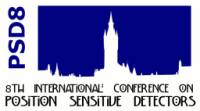Speaker
Alberto del Guerra
Description
In 1985 the introduction of the block detector by Mike Casey and Ronald Nutt, changed the world of nuclear imaging. This invention has made possible high-resolution PET tomographs at a much-reduced cost. Almost all dedicated tomographs built since 1985 have used some forms of the block detector. In the last twenty years most of the additional improvement in PET technique was due to the introduction of new scintillating materials such as LSO and by the development of more powerful electronics and computing technologies. In the same years, Hamamatsu introduced the first large area position sensitive photomultiplier. The application of such technology opened new possibilities for the construction of dedicated high resolution PET apparatus in new emerging fields such as molecular medicine, gene therapy, breast cancer imaging and combined modalities.
Since then, a wide range of new position sensitive photodetectors has been developed and used for PET applications: multi anode PMT’s, Avalanche Photodiodes, Hybrid Photodiodes and, recently, Silicon Photomultipliers. Now some of these technologies are ready for the big step in the field of clinical PET replacing the original block detectors.
A brief historical review of the development of PET detectors and the recent advances are reported here. This paper also presents an overview of the near-future perspectives for PET and PET-MRI scanners with a special attention to the development of SiPMs and SIPM matrices.

